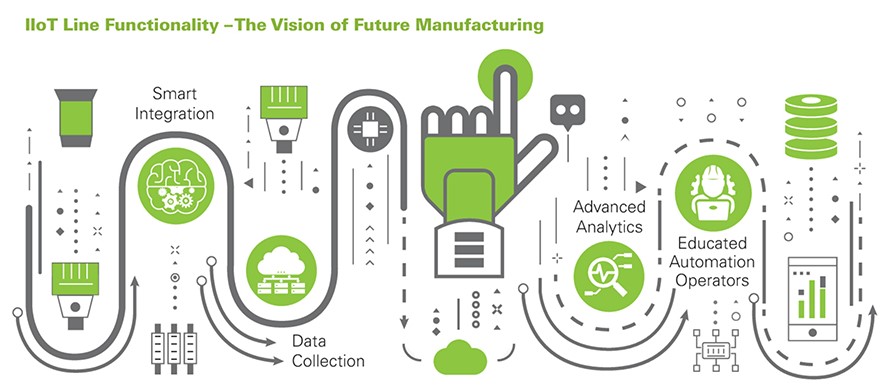With traceability and quality standards in the food industry constantly rising, meat processors are under increasing pressure from customers and regulatory bodies to trace every batch back through the supply chain. Traceability requirements in the Food Safety Modernization Act (FSMA) require companies to act quickly in the event of a recall. The FDA further added the New Era for Smarter Food Safety Blueprint, consisting of four main pillars centered around traceability, tools for outbreak prevention, retail modernization, and food safety culture. The influx of automation along with expanding Industrial Internet of Things (IIoT) technology can prevent unsafe meat and poultry from making it out of plants and onto grocery and retail shelves.
As traditional manufacturing evolves, the implementation of industry 4.0 will be a vital solution that helps meat processors attain these goals. The foundational concepts of industry 4.0 are data, connectivity, continuous monitoring, and process optimization. A comprehensive deployment of an Industry 4.0 strategy requires a high level of operational integration, according to the Automation Timeline: The Drive Toward 4.0 Connectivity in Packaging and Processing white paper produced by PMMI, the Association for Packaging and Processing Technologies. If properly implemented and applied, however, IIoT can address food safety issues and ensure equipment runs effectively and safely.
According to the white paper, applying IIoT to predictive maintenance can be extremely useful to meat processors by implementing IIoT devices that track and store different variables related to a given piece of machinery such as operating temperature, timing, and vibrations. The IIoT system then analyzes that information using advanced algorithms and historical data to predict effectively when the machine needs maintenance or is on the verge of failure.
Some preventative maintenance systems will even shut down machines that are about to fail, reducing the chance of injuring employees or damaging themselves, leading to costly repairs. With this technique, meat processors can reduce or eliminate downtime from machine failure or damage and reduce the overall cost of machine maintenance. This change could provide significant savings for large, industrial food processing companies and smaller food producers that rely heavily on single machines.
Internet-connected sensors can measure critical control points such as time and temperature set points in real-time and send notifications if left unmet. This real-time IIoT technology can quickly detect food safety issues so meat processors can deal with them internally before they even get to the point of recall. Tracking sensors help companies closely monitor food safety data points, ensuring efficient cold chain management. This data enables the supply chain to cooperate to become compliant with local and global regulations. By using automated Hazard Analysis Critical Control Points (HACCP) checklists during the production, manufacturing, and transporting process, meat processors have access to consistent, meaningful data that empowers them to implement food safety solutions.

Another critical benefit of IIoT is its ability to provide staff with remote access to critical systems, even if they are not onsite. For example, workers can remotely react and adjust to cold storage temperatures, preventing product loss and other sensitive food items from the wrong environmental conditions. Remote tech can also alert team members when a delivery has arrived, possibly decreasing the time cargo needs to wait before further processing and lowering the risk of the meat going bad.
FSMA also outlines that manufacturers must identify hazards, define preventative controls to eliminate or reduce the risk, determine process parameters for these controls and then implement and continue to monitor the process. Monitoring ensures corrective actions are taken to verify the system is working correctly. Preventive controls for physical hazards often include metal detectors and X-ray detection systems designed for food products. Because product characteristics differ in proteins, sourcing the correct inspection and detection technology for each application is also essential to ensure products are contamination-free.
No other East Coast event will offer such a wide range of state-of-the-art packaging and processing solutions targeting food safety as PACK EXPO East (March 21-23, Pennsylvania Convention Center). With 400 exhibitors, PACK EXPO East provides a convenient and rewarding opportunity for consumer packaged goods (CPG) and life sciences professionals to explore packaging and processing technology, connect with suppliers and find the solutions needed to compete in a changing marketplace conveniently located just a drive or train-trip away for most of the East Coast. To register or learn more, visit packexpoeast.com. For information about the PACK Ready Health and Safety plan, visit packexpoeast.com/packready.




Report Abusive Comment